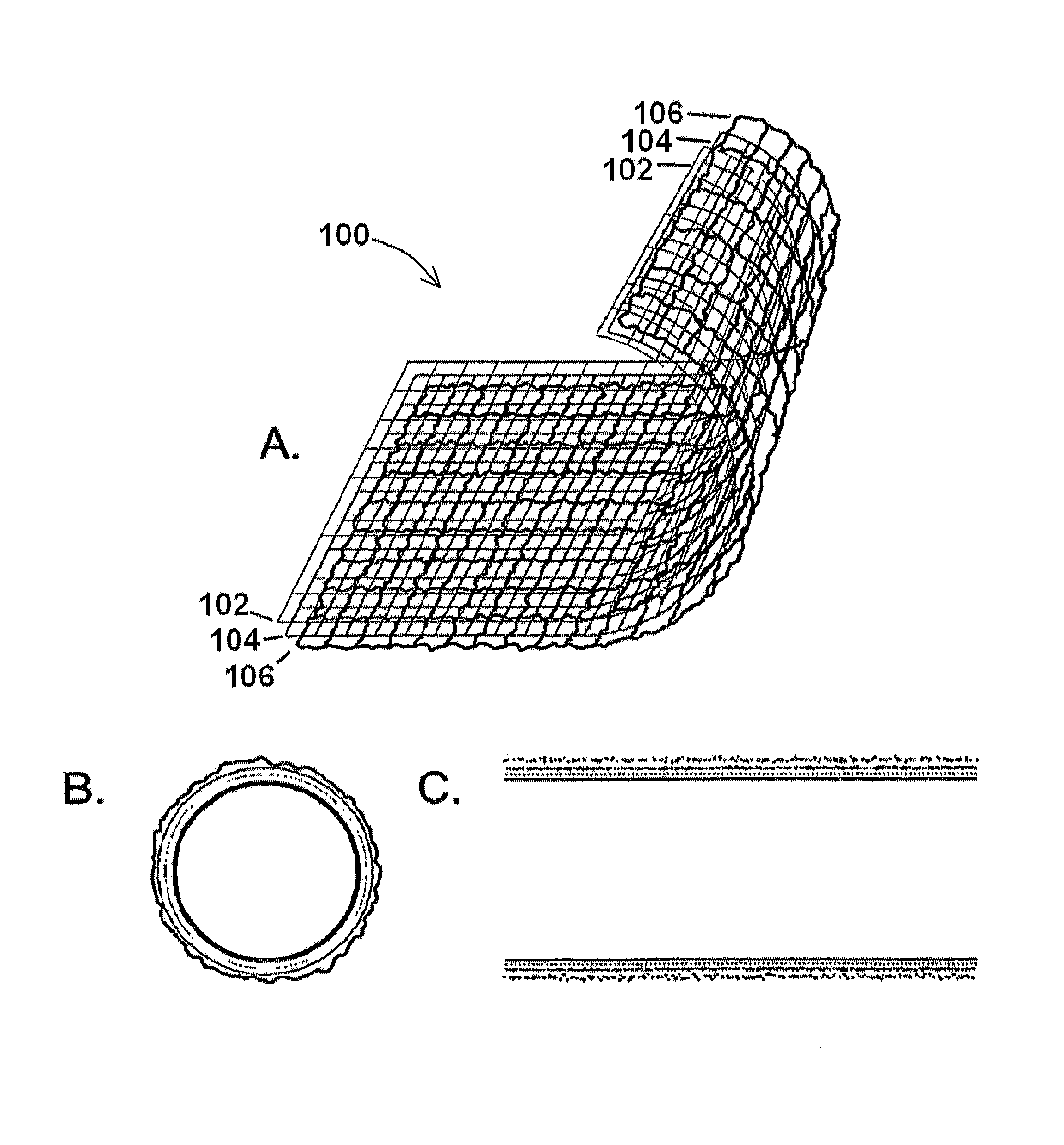Tissue engineering of blood vessels
a technology of blood vessels and tissue, applied in blood vessels, medical science, prosthesis, etc., can solve the problems of reducing the re-occlusion rate, reducing the success rate of patients, and failing to confer long-term prevention of neointimal formation
- Summary
- Abstract
- Description
- Claims
- Application Information
AI Technical Summary
Benefits of technology
Problems solved by technology
Method used
Image
Examples
Embodiment Construction
[0019]The many advantages of the present invention are gleaned by first considering the cause of SVG failure from an engineering perspective. Arteries and veins are different structurally and hence functionally. Functionally, arteries are adapted to higher pressure while the veins experience much lower pressures. Veins also contain valves that inhibit back flow of blood. In addition, a 45-fold difference exists between the vascular compliances of arteries and veins (2.5 mL / mmHg and 120 mL / mmHg, respectively), thus, meaning that veins are much more compliant to the pressures that they encounter while arteries are relatively non-compliant to such pressures.
[0020]Structurally, both arteries and veins contain three basic layers: tunica intima, tunica media, and tunica adventitia. However, differences in thickness and composition exist across all three layers. The most evident difference is the thicker tunica media layer in arteries that enable them to withstand the significantly higher ...
PUM
 Login to View More
Login to View More Abstract
Description
Claims
Application Information
 Login to View More
Login to View More - R&D
- Intellectual Property
- Life Sciences
- Materials
- Tech Scout
- Unparalleled Data Quality
- Higher Quality Content
- 60% Fewer Hallucinations
Browse by: Latest US Patents, China's latest patents, Technical Efficacy Thesaurus, Application Domain, Technology Topic, Popular Technical Reports.
© 2025 PatSnap. All rights reserved.Legal|Privacy policy|Modern Slavery Act Transparency Statement|Sitemap|About US| Contact US: help@patsnap.com



